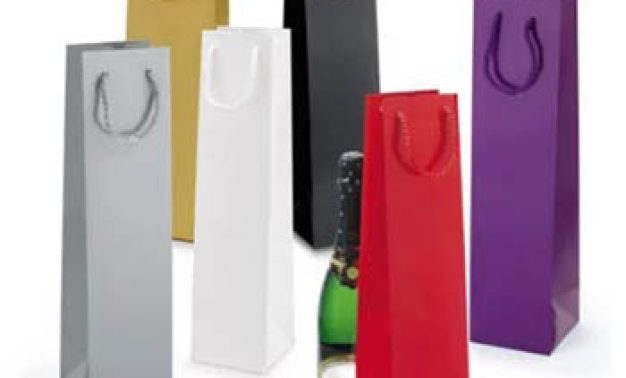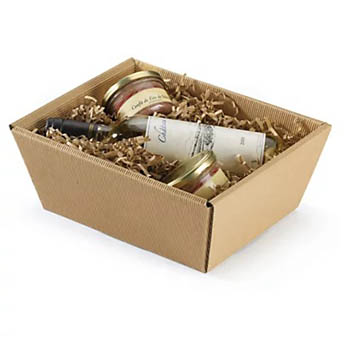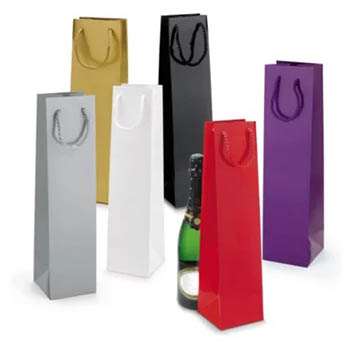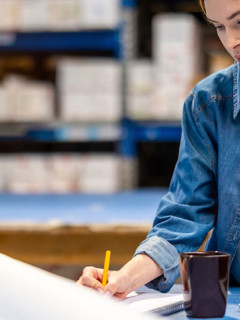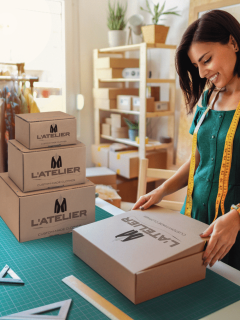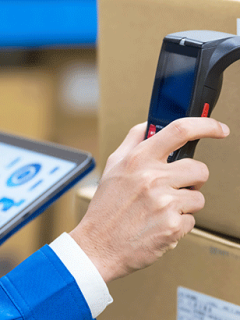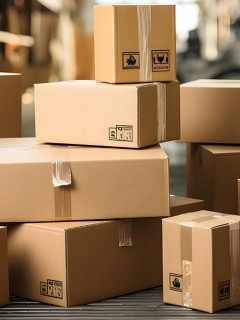Today, a multitude of requirements are placed on “good” packaging. This applies in particular to transport or shipping packaging, but many points can also be applied to sales packaging. In addition to the obvious main task, namely the protection of the packaged goods during transport and storage, we understand packaging 4.0 as packaging that meets the current and future wishes and dreams of customers and shippers.
Packaging – today and in the future
Packaging is constantly being developed and thought through. Advances in research and technology, changing sales markets and the needs of both shippers and recipients result in ever new “compromises”. Whether the packaging of the future will actually be made of seaweed or mushrooms remains to be seen. Today, we can only speculate about the packaging of the future. But what is packaging TODAY that meets all the demands currently placed on it? What is packaging state of the art, packaging 4.0?
A packaging 4.0 is a packaging that is
Where are we today in the use of packaging 4.0?
Fabian Kraft, Head of National Key Accounts at RAJA Germany, ventures an assessment at the Logistic Summit 2020: “We could already map 3.8 quite well today. In real terms, we’re probably at 3.6 – and even that is still unattainable for many German companies.
Why is that? What are the challenges that companies face with regard to packaging? We have “worked through” them point by point:
1. the role of automation in packaging
Above a certain packing volume, you cannot avoid automating the processes. But what is a realistic degree of automation possible today?
Fully automated goods picking, with the help of automated picking machines or picking robots, requires a complete reorganisation of the warehouse systems. An investment that currently hardly pays off. Rising wage costs and labour shortages could lead to a rethink in the (very) long term. However, there are already some practicable solutions for partial automation or electronically supported work in order picking. Picking with the help of mobile data entry (MDE), picking by means of barcodes (pick-by-scan), voice-controlled picking (pick-by-voice), picking with the help of data glasses (pick-by-vision) or by means of radio waves (pick-by-RFID) are some of the approaches that are already a daily reality in practice. Read more in the blog: Modern picking.
In packaging, a certain degree of automation leads to increased efficiency, more sustainability and a final check that misses nothing. This can then look like this or something similar:
A typical semi-automated packing process:
Packing (shipping) boxes is still usually “manual labour”. But along the packing line, automated processes pay off. A carton erecting machine, for example, which uses the order data to send the carton onto the roller conveyor that matches the order in size and composition, not only leads to clearly faster processes, but also pays off in terms of sustainability: In a fraction of a second, the machine can determine which is the smallest possible carton and thus the one that requires the least amount of filling and padding material – while the packer understandably tends to reach for the larger carton so as not to have to repack it later.
After packing, thanks to the RFID chip, it is checked whether the contents of the box also match the order. Here, too, sustainability reasons play a role for this automation step: a subsequent delivery simply means not only an annoyed customer, but also more packaging effort and more transport logistics means more CO².
After packing, the carton is sent to the automatic volume-optimising carton sealing machine (e3neo image) and then to the dispatch labelling system, where it is pre-sorted by postcode and then sent to the appropriate postal trolley or pallet, where it is also stretched if necessary. This process places the requirement of the applied tracking code and machine suitability on the packaging itself.
3 Packaging 4.0: The customer approach
Customers want to be delighted and surprised. A plain brown cardboard box does not do this. Use the advertising space that is available on the packaging! Especially in the steadily growing e-commerce sector, packaging should now be understood as a PoS.
Today, it is common practice in many companies: printed cartons, shipping bags and adhesive tape with the company logo. Recognition value, advertising space and customer loyalty instrument. But Packaging 4.0 can do a little more:
You can go one step further and inspire the customer if the inner surfaces are also used. Even “normal” interior printing can make a big difference here. Highest standard, and thus quasi Packaging 4.0: Each package addresses the customer personally! This is already possible today by attaching a personalised label to the inside of the box, e.g. “Michael, have fun with your new shoes!” or by applying a QR code via the label.
Augmented reality is the final link between the real and the digital world. Via a watermark, which is integrated in an image on the box, you take the customer into another world. Since all information is stored in the cloud, the information presented can be adapted at any time. This is not a dream of the future, but has long been a rapidly growing market, as these figures prove:
- GLOBAL MARKET SHARE:
In the next 5 years
up to 85-90 billion US dollars* - INSTALLED APPLICATIONS:
Total of 3.5 billion installed applications - INCREASE IN SPENDING:
+70% from 2018 to 2019
(to a total of 20 billion)
*Source: https://de.cosmoconsult.com/blog/2019/11/augmented-reality-verpackungen/
4 Sustainable packaging
In principle, packaging is the most important prerequisite for sustainable transport. If the product arrives at the customer’s premises damaged, this is not only a loss of image, but also entails immense costs and a new shipment and thus increased CO² emissions.
According to a 2018 Forbes study, 60% of deliveries contain more than 25% empty packaging, and this has only improved slightly since then. So the goal is to choose the right packaging for your product, meaning packaging only as big as necessary and with just enough cushioning protection to ensure your goods arrive safely. That is the be-all and end-all.
We also see potential for Packaging 4.0 in cushioning protection, because: with the right filling and cushioning material machine integrated at the packing station, you save space and work much more ergonomically than with manual wrapping paper. According to a PwC survey from 2018, sustainable packaging is important to 85% of consumers. Already 52% specifically look for products with environmentally friendly packaging.
According to a study conducted by the STI Group in 2015, respondents were prepared to spend an average of 30 cents – i.e. 12% – more on a product priced at €2.50 if they received sustainable packaging in return. Our experience shows that many companies are thinking about sustainability, but too few are taking the step of changing all their packaging to more sustainable packaging. Often you can ease your conscience by changing a small screw.
They are small steps, but something is happening. The sales figures at RAJA alone are proof of a (hesitant) change in thinking:
- 85% of our customers have at least one environmentally friendly product in their range
- the percentage of those who buy only eco-friendly materials from us has increased by 3% in the last 2 years
- the amount of eco-friendly products sold has increased by 12% in the last 2 years
- Due to cheap and fast warehouse workers, there is a lack of perceived need for automation, whereas Corona has now shown us how fragile supply chains are when they are based on too much purely human labour. Many have respect for changing existing processes.
- Fear of process change and lack of human resources
- Sustainability must be part of the corporate goal
RAJA is happy to help you take the next (or even: the first) step. An existing infrastructure can certainly be converted and adapted step by step parallel to the ongoing business.











